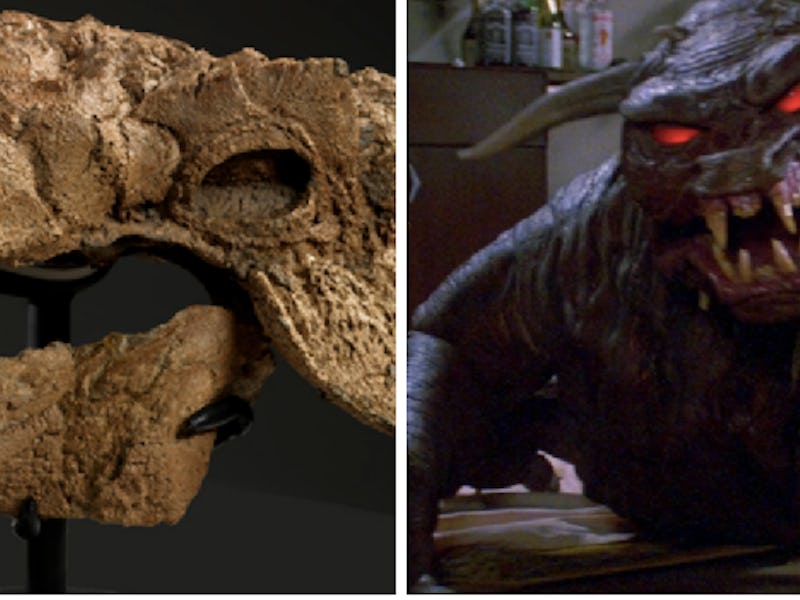The New ‘Ghostbusters’ Dinosaur Is Also the "Destroyer of Shins"

It’s not every day that Dan Aykroyd calls a pile of bones a “magnificent creature,” but that’s what happened when scientists announced the discovery of a new species of dinosaur on Wednesday. The Ghostbusters writer and actor was called in to introduce the 75-million-year-old fossils because of their striking visual similarity with Terror Dogs — the demonic hellhounds from the original film.
Accordingly, the discovered species of dinosaur has been given the official name Zuul crurivastator.
“The generic name refers to Zuul the Gatekeeper of Gozer, a fictional monster from the 1984 film Ghostbusters, and the species epithet combines crus (Latin) for shin or shank, and vastator (Latin) for destroyer, in reference to the sledgehammer-like tail club,” scientists explain in the journal Royal Society Open Science.
This means that the species name crurivastator literally translates to “destroyer of shins.” The herbivore dinosaur would use its weaponized tail against predators, like the Tyrannosaurus rex.
Overview of the tail of the Zuul crurivastator.
In the journal Royal Society Open Science, University of Alberta paleobiologists Victoria Arbour, Ph.D. and David Evans, Ph.D., explain that their specimen is a rare find; despite the fact that the Judith River Formation in northern Montana has been excavated by paleontologists for the past century, it’s very uncommon to find complete dinosaur skeletons, let alone a new species. However, that’s exactly what happened when their team came across a new genus and species of an ankylosaurine dinosaur. This armored plant eater, which is believed to have been 20 feet long and weighed over 5,000 pounds, is both the first ankylosaurine to be found with a complete skull and tail club and the first to be found in North America.
According to the Los Angeles Times, the team’s discovery was accidental. While they were attempting to dig up a different dinosaur fossil, their bulldozer ran into this one instead. Luckily, no significant damage happened — in fact, the fossil is so well preserved that bits of soft tissue, scales, and spike sheaths are still attached in their original placement.
Artist rendition of Zuul cruviastator.
“It [the soft tissue] keeps those bony spikes in place all the way down the tail, so we really have a really good idea of what it would have looked like while it was alive,” Arbour told The Los Angeles Times. “It kind of is like a Rosetta stone for interpreting isolated spikes when we find them when we’re just walking around the badlands.”